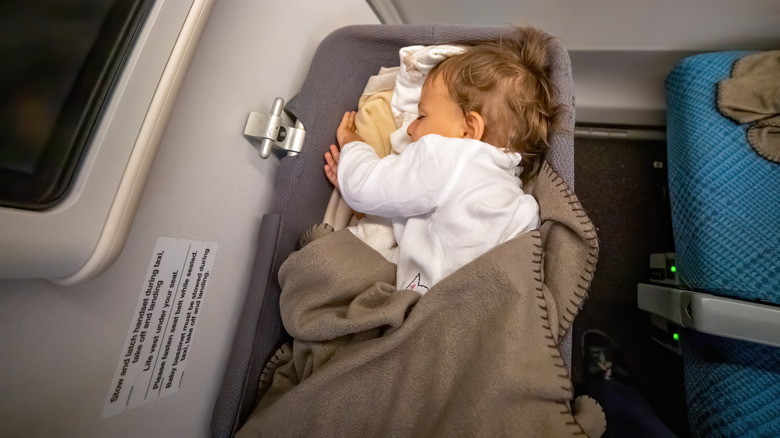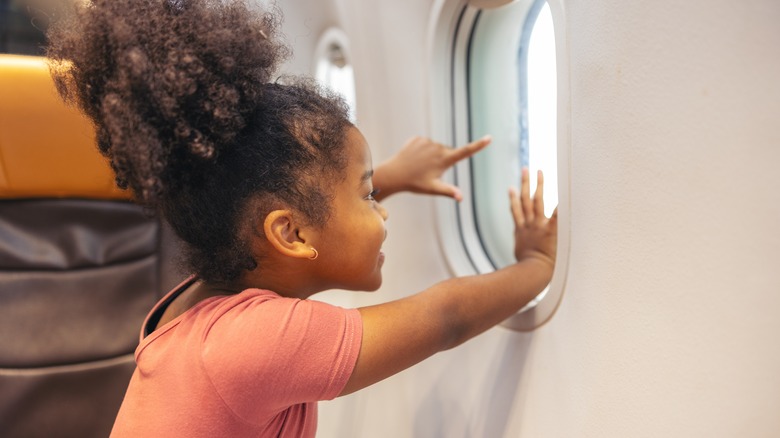Traveling with young children by air can be both an exciting and challenging experience for parents. One of the most crucial factors for a smooth and comfortable flight is selecting the right seat. If you’re traveling with a child, it’s helpful to know that the U.S. Department of Transportation (DOT) has guidelines that encourage airlines to allow children aged 13 or under to sit next to an adult family member or another adult to the best extent possible without any extra charges. But how do you know what specific seats are ideal?
Industry experts, such as flight attendants, can offer valuable insights and help recommend the most suitable seat based on the child’s age. They have in-depth knowledge of aircraft layouts and can offer practical advice based on their experience interacting with passengers daily. Their recommendations also consider safety regulations and guidelines set by aviation authorities. Referring to guidelines from the Federal Aviation Administration (FAA) and hearing from other parents who travel a lot can also help you make the most of your family trip without worrying about seating arrangements.
Flying with babies and toddlers

According to Rebecca Love, a Cabin Service Supervisor for Virgin Atlantic, bulkhead seats are best for the littlest passengers. Love told Mirror that these roomier seats provide extra space for toddlers to stand part of the time and an option to attach a special bassinet, which you can request after booking your flight. This will give your baby room to stretch out and (hopefully) nap. It’s important to note that since there are no passengers directly in front of bulkhead seats, there is no under-seat storage space. While you can access your bags during the flight, you’ll need to store them in the overhead bins during takeoff and landing.
Alternatively, sitting in the back row has several advantages. You can avoid some pressure boarding and disembarking the plane since you won’t be holding other passengers up. You’re also close to the bathroom. A Redditor who has flown frequently with their toddler said they have had good experiences sitting in the back.
“It felt like we were bothering the least amount of people (as far as noise/whining and our son wanting to stand in the aisle a few times).” Love also suggests letting toddlers explore the plane a bit when it is safe to do so. “A change of scenery can quite often make a toddler a little bit happier if they’re getting restless in their seat.”
Sitting with bigger kids on planes

When flying with older kids, the “best” seats depend on a few factors. Traveling with just one child presents more options than a bigger family adventure. For a lone kiddo, consider the magic of a window seat, which can be a constant source of entertainment with cloudscapes and maybe even a glimpse of land below. Sitting close to the front can make it easier to get off after landing, which can be a plus with stir-crazy kids. Avoid seats behind the wing for a quieter experience.
With multiple kids, things get trickier. As with little ones, bulkhead rows can be ideal, providing some personal space for kids to spread out. If there are two adults, consider splitting up, with one parent near one or more children. It’s essential to consider your children’s ages and temperaments when deciding what seating arrangement and location will work best.
“We do three and then one,” says a Redditor with two kids, adding that when they were younger, each parent sat with one child. “My husband sits with the kids so he has extra room. I sit in the seat behind them so they can get my attention if they need anything. […] We prefer the back of the plane so it is closer to the restrooms and more likely to end up with empty seats.”

